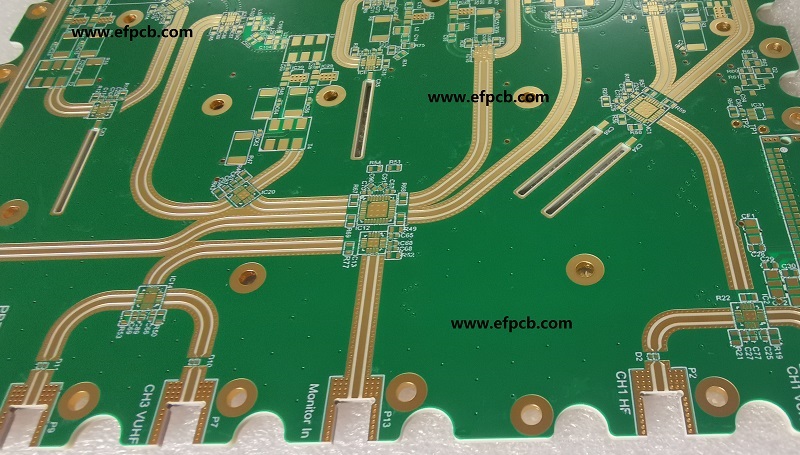Shielding and Grounding Strategies Revealed in RF PCB Design

Keywords: RF Microwave PCB
In the intricate realm of RF Microwave PCB design, achieving optimal performance is a delicate dance between innovation and precision. Among the crucial elements that can make or break the success of an RF circuit, grounding and shielding strategies stand out as the unsung heroes.
Before we embark on the journey of grounding and shielding strategies, it's essential to comprehend the fundamentals. RF circuits operate at high frequencies, where unwanted electromagnetic interference (EMI) and radiofrequency interference (RFI) can wreak havoc on signal integrity. Grounding and shielding play pivotal roles in managing these interferences and maintaining the integrity of RF signals.
Grounding Strategies
Single-Point Grounding
Adopting a single-point grounding approach involves consolidating all ground connections to a single reference point. This minimizes ground loops and reduces the risk of introducing unwanted noise into the system. Proper placement of this single ground point is critical to ensure its effectiveness.
Ground Plane Design
Implementing a solid ground plane beneath the RF components on the RF Microwave PCB helps create a low-impedance path for return currents. This aids in minimizing ground loops and reducing electromagnetic radiation. Careful consideration should be given to component placement and the layout of the ground plane.
Isolation Techniques
Segregating digital and analog components on the PCB can prevent digital noise from coupling into sensitive RF sections. Physical isolation, such as dedicated ground regions for RF components, helps maintain signal integrity by preventing unwanted interference.
Shielding Strategies
Shielded Traces and Connectors
Shielding individual traces carrying high-frequency signals and employing shielded connectors can mitigate signal leakage and cross-talk. The shields are connected to the ground to provide a low-impedance path for unwanted currents.
RF Gaskets and Seals
Enhancing the overall shielding effectiveness involves incorporating RF gaskets and seals around enclosures or connectors. These materials help seal gaps and seams, minimizing the potential for electromagnetic leakage.
Faraday Cages
Integrating Faraday cages around critical RF components or the entire RF Microwave PCB section can effectively shield against external electromagnetic interference. These cages, usually made of conductive materials like copper, act as barriers, preventing unwanted signals from infiltrating sensitive areas.
- 1Understanding UL 94V-0 Flammability Rating for Printed Circuit Boards (PCBs)
- 2HDI PCB Market Outlook 2025: Future Prospects, Growth Analysis & Innovations
- 3HDI PCB Design Comprehensive Guide: Mastering High Density Interconnect Technology in 2025
- 4PCB core raw material CCL
- 5Top 10 Flexible PCB Factories in 2025
- 6Top HDI PCB Manufacturers (2024)
- 7IC Substrate | Comprehensive Guide (2021)
- 8How to Make mSAP PCB?
- 9Top 10 IC Substrate Fabricators (2024)
- 10The Impact of Trump's Tariff Policy on Chinese PCB Industry and Countermeasures

- Skype ID: shawnwang2006
- Phone No。: +86-755-23724206
- Email: sales@efpcb.com
- Quick Contact
